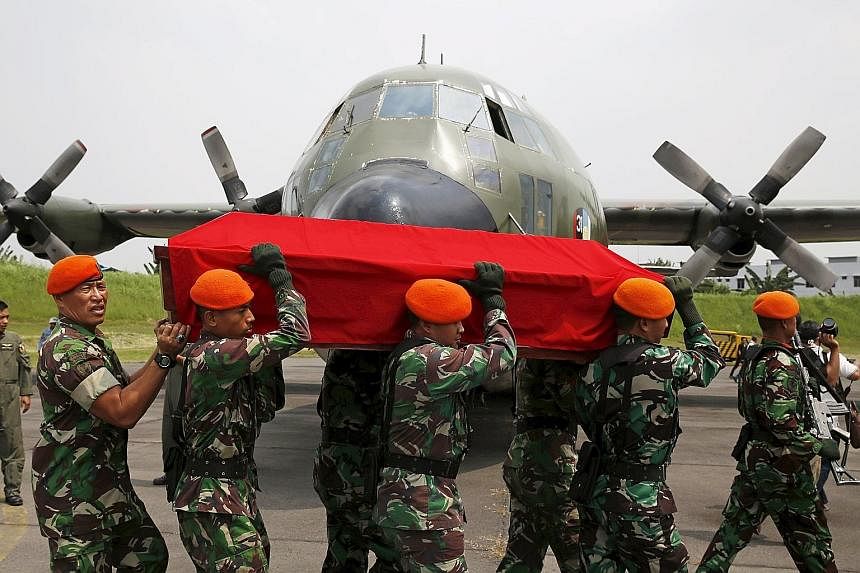JAKARTA • The crash of a Hercules C130 transport plane has highlighted the Indonesian military's equipment deficiencies, even as its defence spending rises at the fastest pace in the region.
While the government says Indonesia should boost domestic weapons production, analysts warn that it needs a broader approach and greater transparency.
Military observer Evan Laksmana sees President Joko Widodo's call for an overhaul of military asset procurement and a review of how the assets are maintained as a step in the right direction, but it is not the first time that such a call has been made. "In 2007, for example, the then Air Force Chief of Staff outlined a 'road map to zero accidents'. The issue is... how do we know these policies were strictly enforced and implemented?" said Mr Laksmana, a Fulbright Scholar in political science in the United States.
Since 2007, there have been at least 16 incidents involving military aircraft, according to The Jakarta Post. The air force has a fleet of mostly ageing planes. For instance, 10 of its Hercules C130s came into operation in the 1960s, 15 in the 1970s and 1980s, five in 1995 and only three from 2013 to last year.
Indonesia's military went on a spending spree after the US in 2005 lifted an arms embargo imposed in the 1990s due to human rights violations in East Timor.
A report by IHS Aerospace, Defence and Security in May said Indonesia's defence spending would rise at the fastest pace in the Asia-Pacific region over the next five years. It will increase by 17 per cent this year to 97.4 trillion rupiah (S$9.74 billion) and is expected to grow 14 per cent annually until the end of the decade, it added.
To politics lecturer Yohanes Sulaiman of the National Defence University, the question is how the military spends the money.
It has an array of suppliers. Some of the military's high-profile buys in recent years include Leopard main battle tanks from Germany, Apache Longbow helicopters from the US, T-50 Golden Eagle fighter aircraft from South Korea, Russian Sukhoi and MiG fighters and British-made frigates.
Part of the reason for the many suppliers is that the US arms embargo prompted Indonesia not to rely on a single supplier. But this gave rise to different issues.
"The military will now have different specifications for assets in the same category, equipment with different spare parts requirements and... different levels of maintenance," said Mr Yohanes, who noted that 16 types of rifles are being used by the military.
Analysts say Mr Joko's call to boost the local defence manufacturing sector may not be achieved in the short or medium term.
"I'm less persuaded, however, that the solution to aviation security, both civilian and military, lies within the domestic defence industrial development," said Mr Laksmana.
Others say Indonesia has to also look at maintenance standards.
"If the aircraft are upgraded and in good working condition when they are handed over, what systems does Indonesia have in place to maintain and sustain them?" asked Ms Natalie Sambhi, an analyst at the Australian Strategic Policy Institute, in a blog over the crash.
Zubaidah Nazeer

